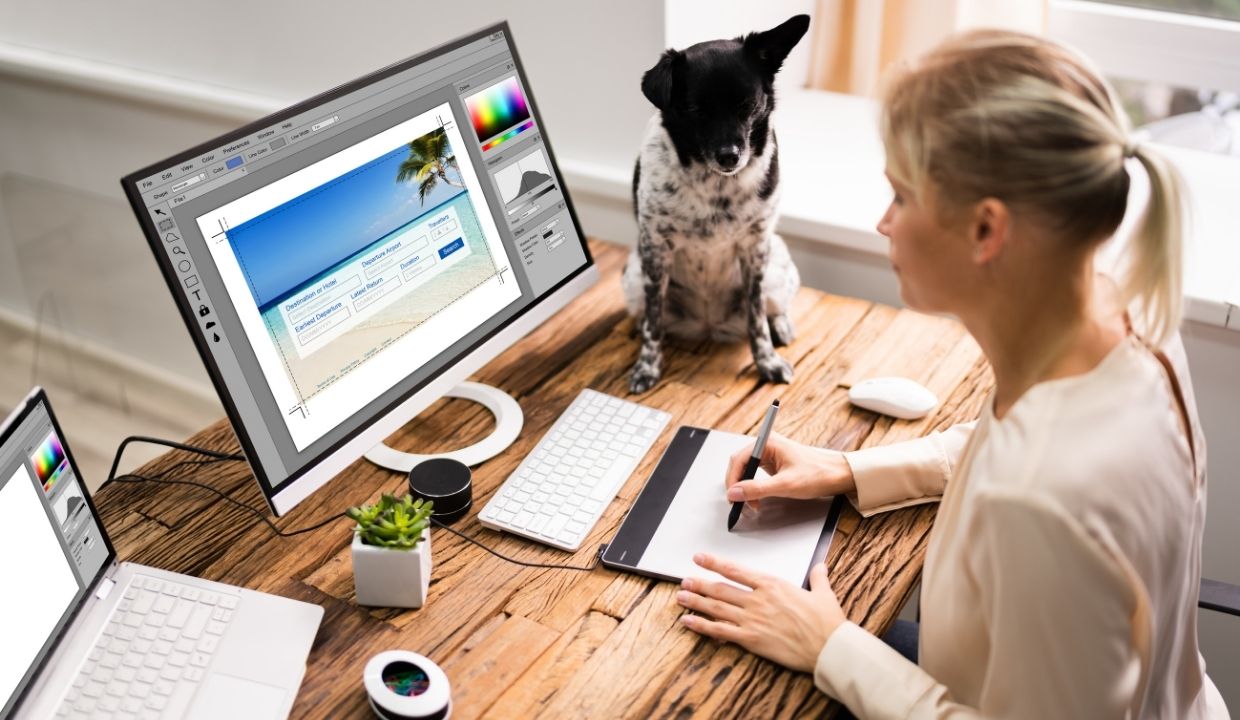In the world of web design, aesthetics play a pivotal role in captivating visitors and creating memorable user experiences. Among various design elements, gradients, patterns, and textures have gained immense popularity for their ability to add depth, visual interest, and sophistication to website backgrounds. This comprehensive guide delves into the art of using gradients, patterns, and textures in background website design. We will explore techniques, best practices, and real-world examples to help you master this essential aspect of web design.
The Power of Background Design
The background of a website serves as its canvas, setting the tone and atmosphere for the entire digital space. When thoughtfully incorporated, gradients, patterns, and textures can elevate the overall design, creating a unique and immersive ambiance that resonates with the target audience. Let’s dive into the various aspects of using these design elements effectively:
Understanding Gradients
Gradients are smooth transitions between two or more colors, often used to add depth and dimension to the background. They can be linear, radial, or angular, each offering distinct visual effects. LSI Keywords: Color Transitions, Gradient Types, Blending Colors.
Tips for Creating Captivating Gradients
- Playful Color Combinations: Experiment with vibrant and complementary color combinations to evoke emotions and catch the users’ attention. LSI Keywords: Color Schemes, Complementary Colors, Emotive Design.
- Subtle Color Changes: Use gradients with subtle color changes for a more sophisticated and professional look. LSI Keywords: Soft Transitions, Muted Gradients.
- Contrasting Elements: Introduce contrasting elements in the foreground to enhance the impact of the gradient background. LSI Keywords: Contrast in Design, Highlighting, Focal Points.
Implementing Patterns in Web Backgrounds
Patterns are repetitive designs or motifs that add texture and interest to the website background. They can range from simple geometric shapes to intricate artworks. LSI Keywords: Background Patterns, Seamless Textures, Repeating Designs.
Best Practices for Using Patterns
- Purposeful Patterns: Select patterns that align with the website’s theme and purpose, enhancing the overall message. LSI Keywords: Theme Integration, Visual Storytelling.
- Subdued Opacity: Adjust the opacity of patterns to ensure they complement the content without overpowering it. LSI Keywords: Transparency, Opacity Settings.
- Responsive Patterns: Create responsive patterns that adapt seamlessly to various screen sizes and devices. LSI Keywords: Mobile-friendly Backgrounds, Adaptive Designs.
Harnessing the Power of Textures
Textures add a tactile feel to the website, making it visually engaging and memorable. From subtle grainy overlays to bold artistic textures, they can be used creatively to leave a lasting impression. LSI Keywords: Texture Types, Visual Appeal, Tactile Designs.
Expert Tips for Texture Implementation
Incorporating textures into website backgrounds can significantly enhance the overall visual appeal and user experience. Here are some expert tips to effectively implement textures in your web design:
|
Tip |
Description |
LSI Keywords |
|
1 |
Blend with Content |
Texture Synergy, Content Cohesion |
|
|
Integrate textures that harmonize with the content and theme of your website. The textures should complement the overall message and add to the user’s understanding and enjoyment of the site. When textures align with the subject matter, they create a cohesive and engaging visual experience. |
Theme-Integrated Textures, Coherent Design |
|
2 |
Balancing Act |
Visual Hierarchy, Negative Space |
|
|
Strike a balance between textures and other design elements to avoid overwhelming the viewer. A cluttered background can distract from the main content and message. Properly balance textures with negative space to create a harmonious and visually appealing layout. |
Texture Distribution, Visual Equilibrium |
|
3 |
High-Resolution Assets |
HD Textures, Image Resolution |
|
|
Always use high-resolution texture assets for a crisp and clear display on all devices. High-quality textures enhance the professionalism and credibility of your website. Whether viewed on a large desktop monitor or a small mobile screen, the textures should retain their visual impact. |
Retina-Ready Textures, Clear Graphics |
Remember, when implementing textures, they should not overpower the content but rather complement and elevate the overall design. Keeping the user experience in mind, choose textures that align with your website’s purpose and create a cohesive and visually delightful presentation.
Real-World Examples of Creative Background Designs
1. Nature-Inspired Gradients: Explore websites that use gradients mimicking natural landscapes, creating a sense of serenity and calmness. LSI Keywords: Landscape Colors, Nature Backgrounds.
2. Artistic Pattern Blends: Discover websites that artistically blend patterns into their backgrounds, showcasing creativity and uniqueness. LSI Keywords: Artistic Web Designs, Pattern Integration.
3. Elegant Textured Backgrounds: Analyze websites that elegantly incorporate textures, adding sophistication and elegance to the design. LSI Keywords: Classy Websites, Tactile Elegance.
FAQs about Using Gradients, Patterns, and Textures in Background Website Design
- Can I Use Multiple Gradients in One Design?
◦ Yes, you can use multiple gradients in one design to create captivating visual effects and depth.
- Are Seamless Patterns Necessary for Backgrounds?
◦ Seamless patterns ensure a smooth and continuous appearance, making them ideal for website backgrounds.
- How Do Textures Enhance User Engagement?
◦ Textures add a tactile feel, making the website more interactive and engaging for users.
- Can I Create My Own Gradients and Patterns?
◦ Absolutely! Creating your own gradients and patterns allows for unique and personalized website designs.
- Are There Any Accessibility Concerns with Textured Backgrounds?
◦ While textures can enhance aesthetics, ensure they don’t hinder readability or accessibility for all users.
- What File Formats Should I Use for High-Quality Background Assets?
◦ For high-quality textures and patterns, use formats like PNG, JPG, or SVG, depending on the design requirements.
Using gradients, patterns, and textures in background website design is a powerful technique to captivate visitors and create exceptional user experiences. By understanding the nuances of each design element and implementing them purposefully, web designers can elevate their projects to new heights. Remember to experiment, innovate, and stay updated with design trends to craft visually stunning and impactful web backgrounds.



Leave a Reply